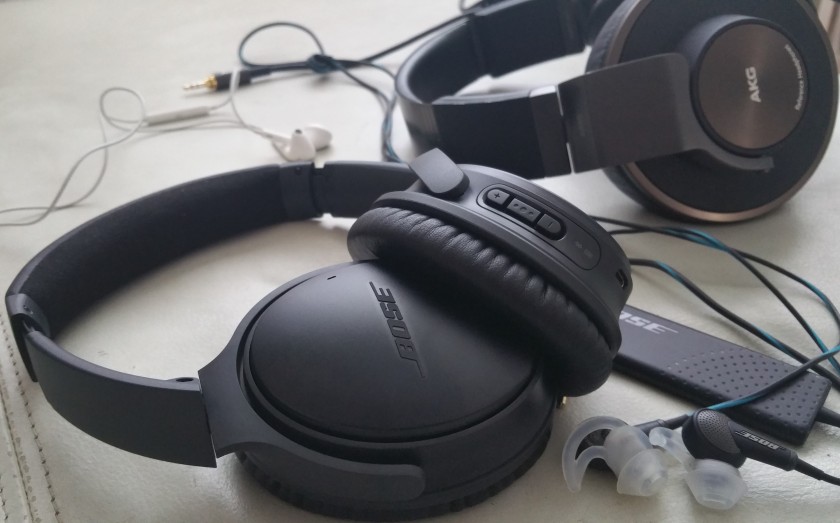 Enjoying music of all kinds home and on the road (and, at summertime, at the beach / in nature), I have been interested in mobile audio solutions (though not in any religious or “serious audiophile” manner, luckily for my wallet). At homes, my headphones are AKG K550, which are very analytical, crystal clean-sounding, closed-back German headphones, featuring 50 mm drivers and weight of 305 grams. I have attempted to travel with these things, but they are just not designed for travel, they are large and do not fold into any compact proportions. Also, long and thick cable is real hassle when you move from train to airport to bus, etc. Thus, to travel headphones.
Enjoying music of all kinds home and on the road (and, at summertime, at the beach / in nature), I have been interested in mobile audio solutions (though not in any religious or “serious audiophile” manner, luckily for my wallet). At homes, my headphones are AKG K550, which are very analytical, crystal clean-sounding, closed-back German headphones, featuring 50 mm drivers and weight of 305 grams. I have attempted to travel with these things, but they are just not designed for travel, they are large and do not fold into any compact proportions. Also, long and thick cable is real hassle when you move from train to airport to bus, etc. Thus, to travel headphones.
In travel, everything is a compromise, in this case primarily between portability, size, weight, and features. Currently, I have settled into three-tier approach. In daily life, I always carry Apple EarPods with Remote and Mic: these are better than most light, in-ear headphones, but they do not isolate the user from the environment sounds, and they also play nicely with my iPhone 6 Plus apps for making phone calls and having those Skype meetings.
The second tier is currently occupied by Bose QuietComfort 20, which are a pair of in-ear noise cancelling headphones that are perfect for that short flight or other day-trip with only light hand luggage. It has well-designed “StayHear+” style silicone tips that happen to fit my ears perfectly (there are three sizes). These are the most efficient noise cancelling headphones I have tried. In everyday use they might even be a bit too efficient: the user is just enjoying blissful silence, even if directly addressed or discussed around you. You will not hear a thing. There is a specific “Aware Mode” button that you need to press, in order to get some ambient sounds through. Also, this is a wired system, so the cable will catch and occasionally tangle with the straps of your laptop bag and elsewhere.
And here comes the third tier, the more demanding mobile use and the solution provided by the new wireless, Bluetooth headphones by Bose: QuietComfort 35. These are bit on the larger size, so I would not probably always pack them with me on short trips, but on longer travels this is an excellent choice. The noise cancelling is very good, but not quite as efficient as that on QC20, since these are an on-ear model rather than a completely isolating in-ear ones – but in many situations that is even preferable. And the sound quality is excellent. There are probably some aspects that a real audiophile expect could criticize (there always are), but What Hifi? magazine reviewer for example gave them five stars. These have a rechargeable lithium ion battery that promises circa 20 hours of power, and after that it is possible to connect a cable and continue in wired mode, without noise cancellation. There is also the ability to connect to multiple (two simultaneously) Bluetooth devices, so that one can take that call from the work phone, while listing to music from the laptop or iPad (I have not tested this yet, I am currently on summer vacation). Pairing can be done with NFC, by touching, and there is a Bose Connect app for smartphones (iOS and Android) that can be used to managing paired devices, changing battery status, and setting sleep timer, for example. When power is turned on, the headphones use voice synthesis to speak aloud the battery level and device name they are currently connected with. Handy. The weight is 309 grams, so this is not the most light-weight option, but wearing QC35 feels comfortable. Testing with different music styles, I was particularly impressed how QC35 handled the “Silent Night” album by Tapani Rinne – with its mixture of deep-bass electronica and quiet, soft acoustic tunes, this is a very challenging recording, and the clear soundscape and powerful dynamics of QC35 really let this kind of music shine.


You must be logged in to post a comment.